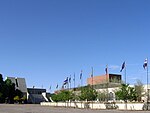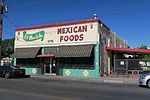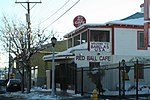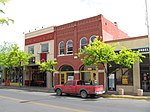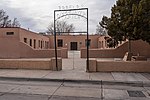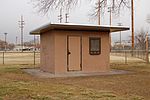West San Jose School
1937 establishments in New MexicoBuildings and structures in Albuquerque, New MexicoDefunct schools in New MexicoNational Register of Historic Places in Albuquerque, New MexicoNew Mexico State Register of Cultural Properties ... and 5 more
Public elementary schools in New MexicoPueblo Revival architecture in Albuquerque, New MexicoSchool buildings completed in 1937School buildings on the National Register of Historic Places in New MexicoSchools in Albuquerque, New Mexico

West San Jose School, also known as Riverview School, is a historic former elementary school in the Barelas neighborhood of Albuquerque, New Mexico. It was built in 1936–37 as a Works Progress Administration project and operated as a school until 1975. It is now part of the National Hispanic Cultural Center. The building was added to the New Mexico State Register of Cultural Properties and the National Register of Historic Places in 1996.
Excerpt from the Wikipedia article West San Jose School (License: CC BY-SA 3.0, Authors, Images).West San Jose School
Riverside Trail, Albuquerque Barelas
Geographical coordinates (GPS) Address Nearby Places Show on map
Geographical coordinates (GPS)
| Latitude | Longitude |
|---|---|
| N 35.068333333333 ° | E -106.65527777778 ° |
Address
National Hispanic Cultural Center
Riverside Trail
87190 Albuquerque, Barelas
New Mexico, United States
Open on Google Maps
